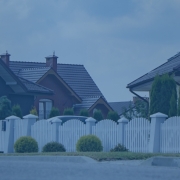Does an ARM Still Make Sense?
Adjustable rate mortgage loans, or ARMs, have been around for a long, long time, even longer than a traditional fixed rate product. Adjustable rate loans provide lenders with interest rates that move with the markets ensuring a margin payment each month to the bank. If rates go up, the bank still profits because an ARM rises and rates in general rise. That said, you’re probably aware the Fed recently raised rates while indicating additional rate moves in the near future. Fixed rates in general have anticipated these rate increases and have risen above historic levels with higher rates expected over the next 12 months. Even if rates were still near their historic lows an adjustable rate loan, or a hybrid, can still make sense.
Main Types of ARMs
ARMs today come primarily in the form of a hybrid. A hybrid is an adjustable rate mortgage where the start rate is fixed for a predetermined period before changing into a loan that can adjust once per year. A so-called “3/1” hybrid has a rate that is fixed for three years before changing into a loan that can adjust once per year. Other hybrid programs include a 5/1, 7/1 and a 10/1 program. The attraction for these programs is the start rate will be a bit lower compared to current fixed rate options. For those seeking a lower rate then a hybrid offers just that.
It has always been the fact that those who are financing a home but do not expect to keep the home for an extended period then an adjustable rate might make sense. An ARM consists of an index, a margin and caps. A common index might be a Constant Maturity Treasury, or CMT. When an ARM approaches its adjustment date, the lender refers to the index and then adds a margin to it to reach the “fully indexed” rate. For example, say the One-Year CMT index is reading 1.00 and the lender’s margin is 2.00. When added together, the note rate-the rate used to calculate the monthly payment- is then 3.00%. Comparatively, a 30 year fixed rate might be closer to 4.00%. Taking the ARM will provide a lower payment compared to a fixed rate in this example.
Now however, what if the index went up significantly over the past three years and the One-Year CMT is 5.00 and the margin is 2.00? The new rate would attempt to go to 7.00% yet won’t because of interest rate caps. A cap limits the amount of change at each adjustment period. If the cap on this loan were 2.00%, while the natural rate would be 7.00% because of the cap it could only go up from 3.00% to 5.00%.
Is an ARM a Good Fit?
If you’re buying and financing a home and don’t anticipate keeping the home any longer than five years then a 5/1 or a 7/1 might be a good option for you. If you’re not sure how long you’ll own the home or are confident you’ll be keeping the property well into the future, then an ARM may not be your best choice. However, you should always consider all your loan options, even those of which you may not even be aware. Rates have been on the rise. It might be time to check out an ARM. Compare loan options and check rates for free any time here.


